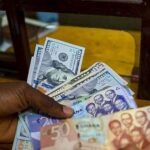ACCRA, Sept. 17, 2025 (Reuters) — Ghana’s public debt stock surged by GH¢15.8 billion in July to reach GH¢628.8 billion ($59.9 billion), reversing a downward trend from earlier in the year, according to fresh data released by the Bank of Ghana on Wednesday.
The increase marks a shift from the steady decline observed in the first half of 2025, when the debt had fallen to GH¢613 billion by June, equivalent to about 43.8% of gross domestic product (GDP). The July figure now stands at roughly 44.9% of GDP, signaling a modest uptick in borrowing pressures as the West African nation navigates its post-restructuring economic landscape.
In U.S. dollar terms, the total debt edged up from $59.4 billion at the end of June, reflecting currency fluctuations and fresh domestic issuances. External debt, which constitutes the bulk of Ghana’s obligations to foreign creditors, dipped slightly to $29.0 billion from $29.1 billion the prior month, accounting for 21.8% of GDP, the Bank of Ghana data showed.
Domestic debt, on the other hand, drove the overall rise, climbing to GH¢323.7 billion from GH¢312.7 billion in June and representing 23.1% of GDP. This upswing comes as the government taps local markets to fund ongoing fiscal needs, including infrastructure projects and social spending, amid lingering effects from the 2022 debt default that prompted a $3 billion IMF bailout.
Economists tracking Ghana’s fiscal path point to the July data as a reminder of the tightrope the administration is walking. “While the debt restructuring has provided some breathing room, domestic financing costs remain elevated due to high interest rates,” said Kwame Asiedu, an Accra-based analyst at Bloomberg Economics. “This month’s increase isn’t alarming in isolation, but it underscores the need for sustained revenue mobilization to keep the debt-to-GDP ratio in check.”
The Bank of Ghana’s monthly economic bulletin, which includes the debt figures, also highlighted positive fiscal indicators for July. The overall fiscal deficit narrowed to 1.4% of GDP, while the primary balance — which excludes interest payments — posted a surplus of 0.7% of GDP. These outcomes reflect tighter spending controls and improved tax collections, key pillars of the IMF-supported program launched in May 2023.
Ghana’s debt trajectory has been under intense scrutiny since the country suspended payments on most external bonds in late 2022, leading to a landmark restructuring agreement earlier this year. Under the deal, creditors agreed to haircut terms that shaved billions off the stock, helping reduce the burden from a peak of over 90% of GDP in 2022. The International Monetary Fund projects the debt-to-GDP ratio will hover around 60% by year-end 2025, assuming adherence to reform benchmarks.
Yet, challenges persist. Inflation, which eased to 21.6% in August from 22.8% in July, continues to erode purchasing power and complicates debt servicing. The cedi’s relative stability — trading at about GH¢10.5 to the dollar in July — cushioned the dollar-denominated figure, but analysts warn of volatility risks from global commodity prices, given Ghana’s reliance on gold and cocoa exports.
Finance Minister Ken Ofori-Atta, in a recent statement to Bloomberg, emphasized the government’s commitment to fiscal discipline. “We’re on track with our IMF targets, and this data shows the restructuring is working,” he said. “But we must prioritize growth to ensure debt sustainability.”
For investors, the July uptick has sparked mixed reactions. Ghana’s Eurobond yields, which had dipped below 10% post-restructuring, ticked higher this week, with the 2035 issue trading at a 11.2% yield, according to Tradeweb data. “It’s a blip, but markets are sensitive to any reversal in the deleveraging story,” noted a London-based portfolio manager at CNN Business.
Looking ahead, the Bank of Ghana’s next quarterly review in October will offer deeper insights into debt composition and servicing costs. With elections looming in December 2024 — wait, no, the 2024 polls have passed, but the new administration faces the same hurdles — policymakers are under pressure to balance austerity with economic stimulus.
Ghana’s journey from crisis to stabilization serves as a case study for other emerging markets grappling with debt distress. As the data underscores, progress is fragile, and the road to single-digit inflation and sub-50% debt ratios remains long.




